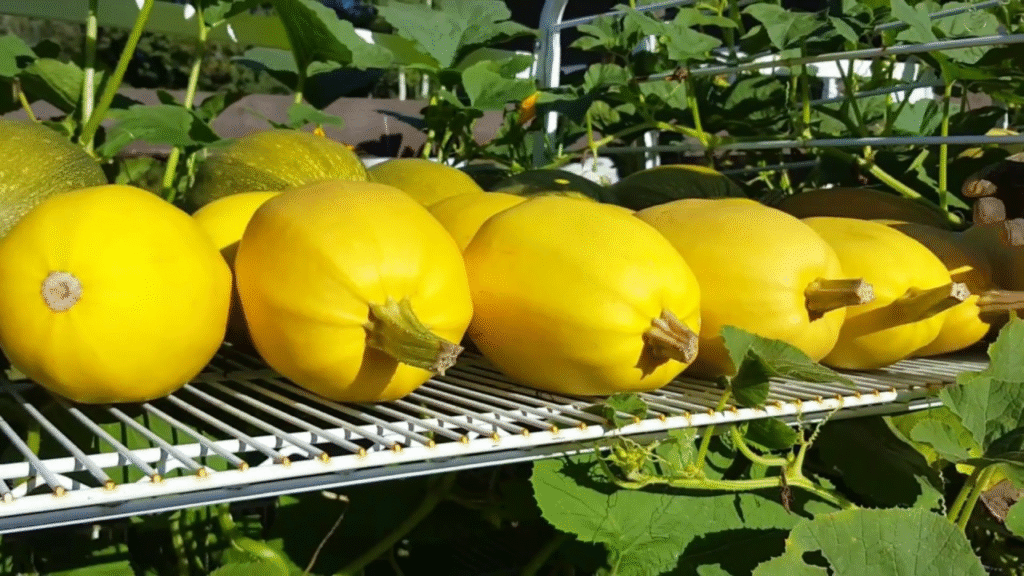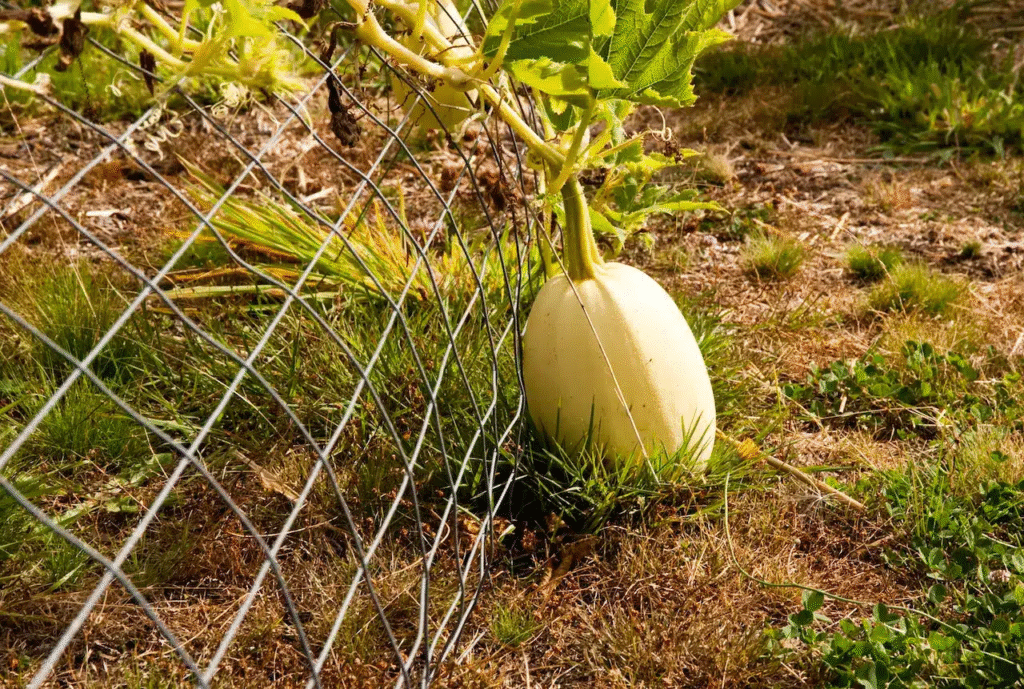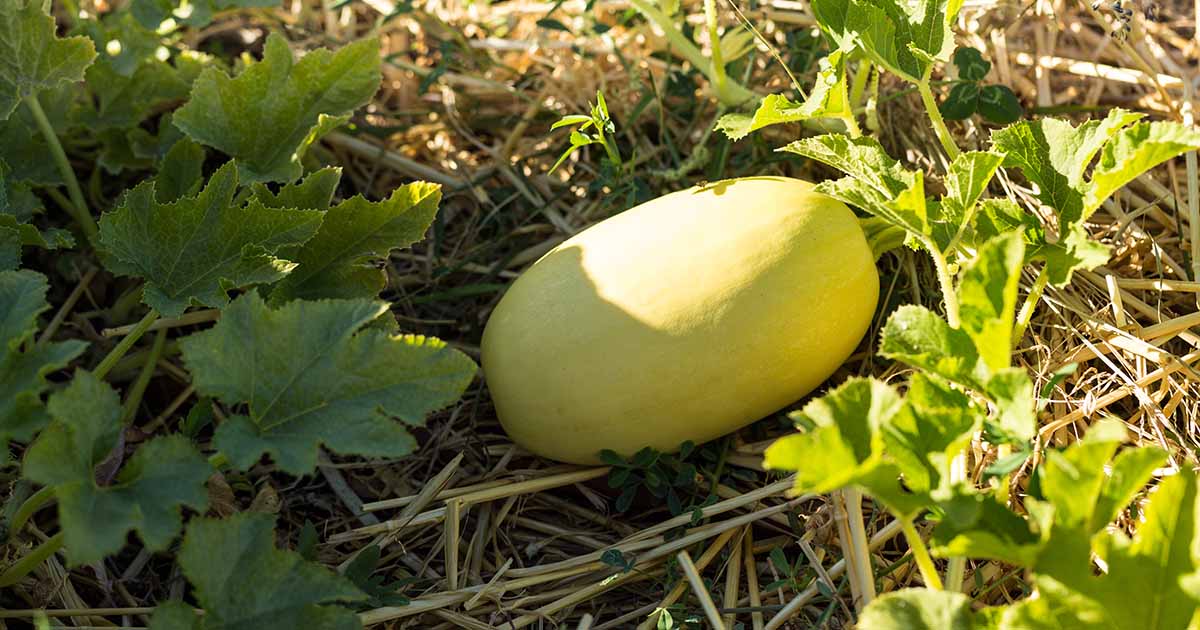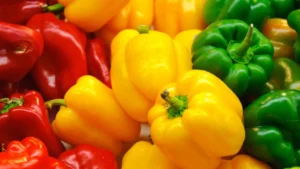How to Grow Spaghetti Squash: A Complete Guide
Are you looking to add a versatile and nutritious vegetable to your home garden? Spaghetti squash (Cucurbita pepo) might be exactly what you need. This unique winter squash has gained tremendous popularity in the US market due to its pasta-like strands and nutrient-rich profile. Whether you have a spacious garden, a modest patio for container gardening, or just a sunny windowsill, you can successfully grow this delicious squash at home.
What Makes Spaghetti Squash Special?
Spaghetti squash stands out among winter squashes for its distinctive flesh that separates into spaghetti-like strands when cooked. According to the United States Department of Agriculture (USDA), spaghetti squash is low in calories but high in fiber, vitamins A and C, and several essential minerals (USDA Food Data Central).
With the growing interest in low-carbohydrate alternatives to pasta, spaghetti squash has become increasingly popular in the US market. Home gardeners appreciate that a single plant can produce multiple fruits, each weighing between 3 to 5 pounds, providing excellent value for the minimal garden space they require.
Growing Spaghetti Squash from Seeds

Starting Seeds Indoors
Starting your spaghetti squash seeds indoors gives you a head start on the growing season, which is particularly important if you live in northern regions of the US with shorter summers.
- Timing: Begin seeds indoors 3-4 weeks before your area’s last expected frost date. You can find your region’s frost dates through the USDA Plant Hardiness Zone Map.
- Materials Needed:
- Biodegradable seed-starting pots (3-4 inches deep)
- High-quality seed starting mix
- Spaghetti squash seeds
- Spray bottle for watering
- Grow lights or a sunny window
- Planting Process:
- Fill your pots with moistened seed starting mix
- Plant seeds 1 inch deep, 2 seeds per pot
- Keep soil consistently moist but not soggy
- Maintain temperature around 70-75°F (21-24°C) for germination
- Once seedlings emerge, thin to one plant per pot by snipping the weaker seedling
- Provide 14-16 hours of light daily
- Hardening Off: About a week before transplanting outdoors, begin the hardening off process by placing your seedlings outside in a sheltered location for increasing periods each day.
Direct Sowing in the Garden
If you live in a region with a longer growing season (USDA zones 5-11), direct sowing is a simple and effective method.
- Timing: Plant seeds outdoors 2-3 weeks after the last frost date when soil temperatures reach at least 60°F (15.5°C).
- Site Selection: Choose a location that receives 6-8 hours of full sun daily with well-draining soil.
- Soil Preparation:
- Work in 2-3 inches of compost or aged manure
- Ensure soil pH is between 6.0-6.8 (slightly acidic to neutral)
- Create mounds or hills about 3 feet in diameter, spaced 6 feet apart
- Planting Method:
- Plant 4-5 seeds per hill, 1 inch deep
- Once seedlings develop 2-3 true leaves, thin to 2-3 strongest plants per hill
Growing Spaghetti Squash in Containers
Don’t have garden space? No problem! Spaghetti squash can thrive in containers, making it accessible for patio, balcony, or rooftop gardens.
Container Requirements
- Size: Choose a large container with at least a 5-gallon capacity (bigger is better; 10-15 gallons is ideal)
- Drainage: Ensure the container has adequate drainage holes
- Soil Mix: Use a high-quality potting mix designed for vegetables, mixed with compost
- Support: Provide a trellis or cage for vertical growth to save space
Container Growing Process
- Fill your container with potting mix to about 1 inch below the rim
- Plant 2-3 seeds in the center, 1 inch deep
- After germination, thin to the strongest plant
- Position your container where it will receive at least 6 hours of direct sunlight daily
- Water consistently, keeping soil evenly moist
- Train vines up a trellis as they grow
- For heavier fruits, create slings from old t-shirts or pantyhose to support them on the trellis
Indoor Growing of Spaghetti Squash
Growing spaghetti squash entirely indoors is challenging but possible with the right setup.
Requirements for Indoor Success
- Light: A south-facing window plus supplemental grow lights providing 12-14 hours of light daily
- Container: A minimum 10-gallon container with excellent drainage
- Pollination: You’ll need to hand-pollinate flowers since there are no natural pollinators indoors
- Temperature: Maintain 70-75°F (21-24°C) during the day and no lower than 65°F (18°C) at night
- Air Circulation: Use a fan to provide gentle air movement for stronger stems and pollination
Hand Pollination Process
- Identify female flowers (with small fruit behind the blossom) and male flowers (with straight stems)
- Use a small paintbrush or cotton swab to collect pollen from male flowers
- Gently transfer pollen to the center of female flowers
- Repeat with multiple flowers for better success rates
Caring for Spaghetti Squash Plants
Watering Requirements
Spaghetti squash needs consistent moisture, especially during flowering and fruit development.
- Amount: Provide 1-1.5 inches of water weekly (adjust based on rainfall)
- Method: Water at soil level to keep foliage dry and prevent disease
- Timing: Water in the morning to allow leaves to dry before evening
Fertilization Schedule
| Growth Stage | Fertilizer Type | Application Rate | Frequency |
|---|---|---|---|
| Planting | Balanced (10-10-10) | As directed on package | Once at planting |
| Early Growth | Nitrogen-rich (higher first number) | Half-strength | Every 2-3 weeks |
| Flowering | Phosphorus-rich (higher middle number) | As directed | Once at first flowers |
| Fruiting | Potassium-rich (higher last number) | As directed | Every 3-4 weeks |
Managing Pests and Diseases
According to the USDA Agricultural Research Service, the most common spaghetti squash pests include:

- Squash Bugs: Handpick and drop in soapy water; use row covers until flowering
- Cucumber Beetles: Apply organic insecticides like neem oil; use yellow sticky traps
- Powdery Mildew: Ensure good air circulation; apply fungicidal sprays at first sign
- Squash Vine Borers: Wrap base of stems with aluminum foil; monitor for entry holes
Harvesting and Storing Your Spaghetti Squash
When to Harvest
Spaghetti squash typically matures 90-100 days after planting. Look for these signs of readiness:
- The rind has turned a bright, uniform yellow (or your variety’s mature color)
- The skin has hardened and cannot be easily pierced with a fingernail
- The stem has begun to dry and crack
- The squash produces a hollow sound when tapped
Proper Harvesting Technique
- Use sharp pruning shears or a knife to cut the stem, leaving 2-3 inches attached
- Never lift squash by the stem alone, as it may break off
- Handle gently to avoid bruising
- Cure harvested squash in a warm (80-85°F/27-29°C), dry location for 10-14 days
Storage Methods
Properly cured spaghetti squash can last 2-3 months or even longer with proper storage:
- Temperature: Store in a cool, dry place (50-55°F/10-13°C)
- Humidity: Aim for 50-70% relative humidity
- Arrangement: Place squash in a single layer, not touching each other
- Inspection: Check regularly for signs of softening or decay
Common Problems and Solutions

Plant Problems
- Poor germination: Ensure soil temperature is above 60°F (15.5°C); check seed freshness
- Few female flowers: Excessive nitrogen can reduce female flower production; switch to lower-nitrogen fertilizer
- Blossom drop: Usually caused by extreme temperatures or inconsistent watering; maintain steady conditions
Fruit Problems
- Small fruits: May indicate insufficient pollination; hand-pollinate or improve pollinator habitat
- Misshapen fruits: Often results from inconsistent watering; maintain even soil moisture
- Rotting on the bottom: Caused by contact with wet soil; place cardboard or straw under developing fruits
Companion Planting for Spaghetti Squash
According to the USDA National Agricultural Library, certain plants can benefit spaghetti squash when planted nearby:
- Good companions: Corn, beans, radishes, nasturtiums, marigolds
- Poor companions: Potatoes, other squash varieties (increased pest risk)
Conclusion: Enjoying Your Homegrown Spaghetti Squash
Growing spaghetti squash at home is a rewarding experience that provides you with a versatile, nutritious vegetable that can be used in countless recipes. From garden to container to indoor growing, you now have the knowledge to successfully cultivate this popular winter squash.
By following the guidelines in this guide and adapting them to your specific growing conditions, you’ll be enjoying homemade “pasta” dishes featuring your very own spaghetti squash in just a few months. The flavor and satisfaction of growing your own food make the effort well worth it!
Remember that gardening is partly science and partly art—don’t be afraid to experiment and adapt these methods to find what works best in your unique growing environment.






